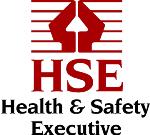Guide To LOLER Lifting Regulations
What The Health & Safety Executive Say About LOLER
What equipment is covered by the Regulations?
Lifting equipment includes any equipment used at work for lifting or lowering loads, including attachments used for anchoring, fixing or supporting it. The Regulations cover a wide range of equipment including, cranes, forklift trucks, lifts, hoists, mobile elevating work platforms, and vehicle inspection platform hoists. The definition also includes lifting accessories such as chains, slings, eyebolts etc. LOLER does not apply to escalators, which are covered more specifically by the Workplace (Health, Safety and Welfare) Regulations 1992. If you allow employees to provide their own lifting equipment, then this too is covered by and should comply with the Regulations.
 Do the Regulations apply to me?
Do the Regulations apply to me?
If you are an employer or self-employed person providing lifting equipment for use at work, or you have control of the use of lifting equipment, then the Regulations will apply to you. They do not apply if you provide equipment to be used primarily by members of the public , for example lifts in a shopping centre.
However, such circumstances are covered by the Health and Safety at Work etc Act 1974 (HSW Act). While your employees do not have specific duties under LOLER, they do have general duties under the HSW Act and the Management of Health and Safety at Work Regulations 1999 (the Management Regulations), for example to take reasonable care of themselves and others who may be affected by their actions and to co-operate with others.
The Regulations cover workplaces where the HSW Act applies – this includes factories, offshore installations, agricultural premises, offices, shops, hospitals, hotels, places of entertainment etc.
What do the Regulations require me to do?
You need to make sure that when using any lifting equipment the requirements of LOLER are met. For example, you should make sure that
all lifting equipment is:
– sufficiently strong, stable and suitable for the proposed use. Similarly, the load and
anything attached (eg timber pallets, lifting points) must be suitable;
– positioned or installed to prevent the risk of injury, eg from the equipment or the load falling or striking people;
– visibly marked with any appropriate information to be taken into account for its safe use, eg safe working loads. Accessories, eg slings, clamps etc, should be similarly marked.
Additionally, you must make sure that:
– lifting operations are planned, supervised and carried out in a safe manner by people
who are competent;
– where equipment is used for lifting people it is marked accordingly, and it should be
safe for such a purpose, eg all necessary precautions have been taken to eliminate or reduce
any risk;
– where appropriate, before lifting equipment (including accessories) is used for the
first time, it is thoroughly examined. Lifting equipment may need to be thoroughly examined in
use at periods specified in the Regulations (ie at least six-monthly for accessories and
equipment used for lifting people and, at a minimum, annually for all other equipment) or at
intervals laid down in an examination scheme drawn up by a competent person. All examination
work should be performed by a competent person (someone with the necessary skills, knowledge
and experience);
– following a thorough examination or inspection of any lifting equipment, a report is
submitted by the competent person to the employer to take the appropriate action.
Thorough Examination Of Lifting Equipment Guide

